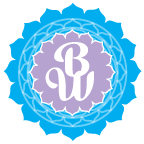You Can Benefit from Abhyanga
Abhyanga is a traditional self-care (dinacharya) practice in Ayurveda. This massage with warm oil can be received both as a treatment or practiced as a self-massage. Abhyanga is one of the best ways to calm Vata dosha, creating a sense of calm and groundedness. Our skin is our largest sense organ and related to Vata dosha. This is my favorite Ayurvedic practice. It leaves me feeling relaxed and protected.
One of the words for oil in Sanskrit is, “Sneha.” Sneha also means, “love”. The practice of Abhyanga as a regular self-care routine is an exercise in self-love. One of the classic Ayurvedic texts, the Ashtanga Hrdayam says, “Abhyanga should be resorted to daily. It wards off old age, exertion and aggravation of Vata.” -AH: Sutrasthana II: 8-9
The Benefits of Abhyanga
· Lowers stress and calms the nervous system
· Promotes sleep and increases deeper sleep
· Increases circulation
· Increases lymph drainage
· Increases longevity
· Promotes healthier skin
· Provides better muscle tone and vigor
· Reduces muscle stiffness
· Certain medicated oils promote healing
· Increases stamina
· Lowers blood pressure
[1] https://www.healthline.com/health/abhyanga-massage#oils
[2] https://www.banyanbotanicals.com/info/plants/science-research/abhyanga-benefits-study/
Instructions for Abhyanga/Oil Massage
You will need: Old towel, pot of hot water, spray bottle with dish detergent, wash cloth and 1-4 oz. dosha specific massage oil. (Vatas will use more oil, Pittas less and Kaphas just a bit.)
Note: Not to be done if you have Ama (toxins in GI) or with some conditions. If Kapha is out of balance it is best to skip. You must have a strong digestion to assimilate. Also, do not do while menstruating.
Put 1-4 oz. of dosha specific oil in a small container. Warm the oil by placing the jar in the pot. Generally, each dosha has a specific massage technique. However, feel free to experiment. Working from the head down to the feet may be more cleansing. It is recommended for Vata to begin at the feet and move up to the head. For Pitta, move from head down to the feet. Kapha should use very little oil and begin with the belly, move down to the feet and then up to head. Vata and Pitta need slow rhythmic massage while Kapha can be deeper and more vigorous. Use long strokes on the long bones and circles at the joints. Do not forget your ears. You can also try a drop in your eyes.
A head massage may be done the night before (if you are washing your hair). This will promote good sleep. Hint: If you are washing oil out of your hair, try shampooing before you wet your hair. Rinse and repeat.
Keep the oil on your body for at least 10-15 minutes. Shower off in hot water so that your pores open and the oil sinks in. Traditionally, one uses a sauna or steam first and then showers. I let my bathroom get foggy before I go under the water. BE CAREFUL YOU DO NOT SLIP! Soap off the excess oil.
I keep a spray bottle of dish washing soap and wash cloth in the shower. At the end I spray down the tub and use the wash cloth with my foot to clean off any oily film.
Oils for Specific Doshas
Vata: Sesame oil (non-toasted), medicated oils like Dhwantaram, Ashwagandha-Bala or Mahanarayana
Pitta: Coconut, medicated oils like Kshirabala or Pindutaila
Kapha: A small amount of almond, sesame or mustard oil
(Medicated oils are used for certain injuries, conditions, illnesses and dosha related issues.)
[1] https://www.healthline.com/health/abhyanga-massage#oils
[2] https://www.banyanbotanicals.com/info/plants/science-research/abhyanga-benefits-study/
